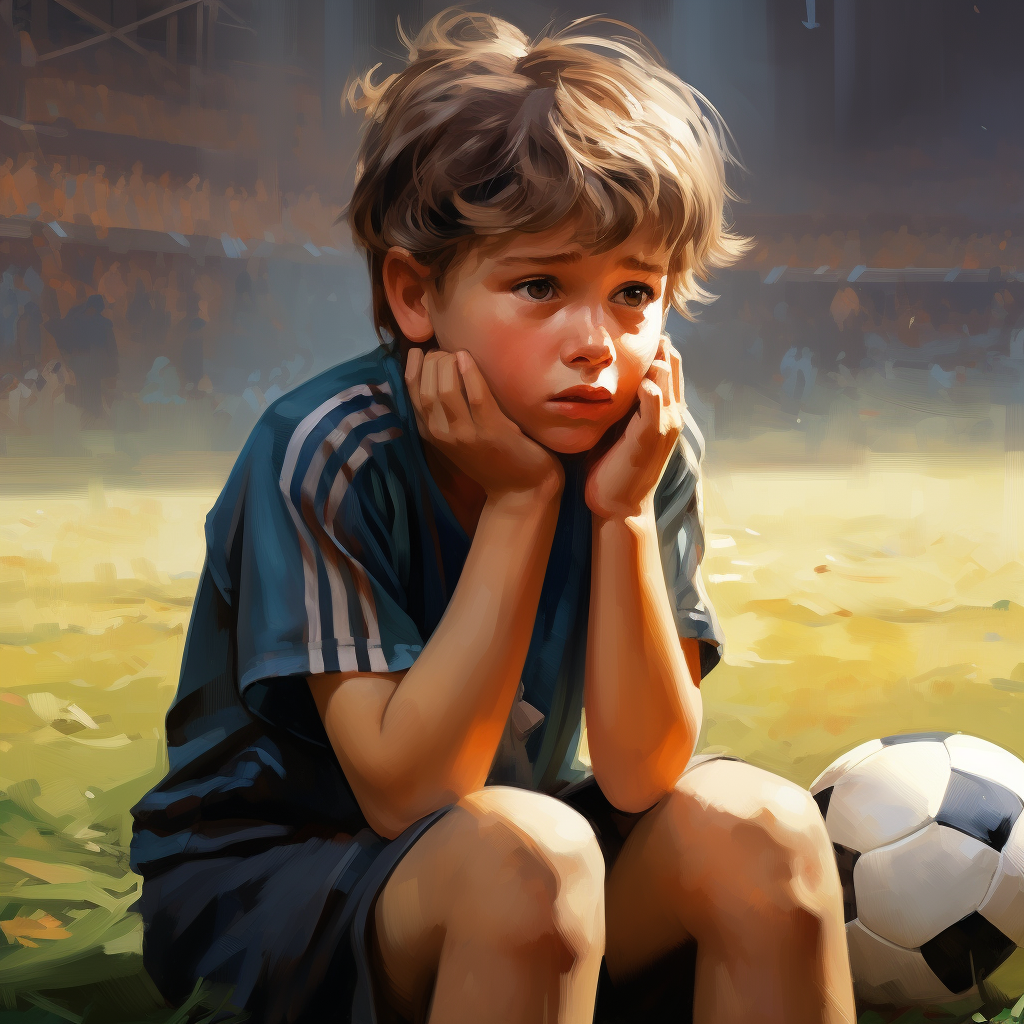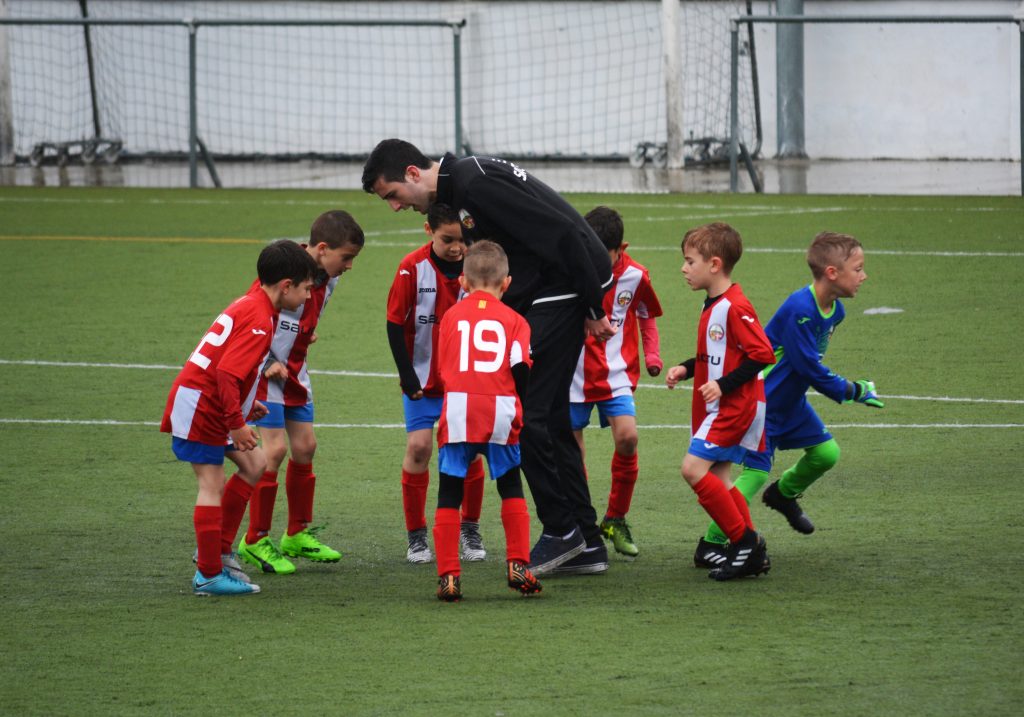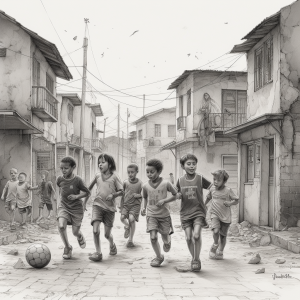
Why Do Kids Quit Soccer? Exploring the Reasons Behind the Dropout Rate
The participation of kids in soccer is a widespread phenomenon, with many starting at a young age driven by the sport’s fun and team-oriented nature.
However…
There is a noticeable trend of children leaving the sport as they grow older.
This attrition is not unique to soccer; it occurs across various youth sports.
The factors influencing a child’s decision to stop playing are multifaceted and deeply rooted within the culture of youth sports. While enjoying the game is a primary reason children play sports, a shift in their experience from enjoyment to dissatisfaction can prompt them to hang up their boots.
Understanding why kids quit soccer requires a closer look at the interplay between enjoyment, competitiveness, and external pressures.
When the scale tips towards high stress and decreases in fun due to an overemphasis on winning or poor relationships with coaches and team members, a child’s continued participation becomes less likely.
Furthermore, the balance between sports, academics, and personal interests can lead to difficult choices as children age, with changing priorities often taking precedence over the commitment required for organized sports like soccer.
Key Takeaways
A decline in enjoyment due to various stressors can lead children to quit kids soccer.
The balance between sports, school, and personal interests is a significant factor in the decision to stop playing.
Changes in priorities and interests influence kids’ decisions to transition out of youth soccer.

Understanding Youth Sports Culture
Youth sports culture has undergone significant shifts, with children’s engagement in organized sports now reflecting broader societal trends and attitudes towards childhood development and competitive play.
Developmental Stages and Sports
Children’s developmental stages are critically important in shaping their sports experience.
At younger ages, sports serve primarily as a means to develop motor skills and social interaction.
As children grow, the focus tends to shift towards skill refinement and more structured competition.
Organized sports, starting from a young age, are designed to align with these developmental stages, offering varying levels of complexity and competitive pressure.
Role of Organized Sports in Childhood
Organized sports play a pivotal role in children’s lives, offering structured settings for physical activity, skill development, and socialization.
Youth sports are often the first experience children have with teamwork, discipline, and the pursuit of excellence.
However…
This early introduction to sports is fraught with the risk of burnout or disengagement if not well-aligned with each child’s individual interests and needs.
Early Specialization vs. Diverse Sports Participation
A clear push for kids to specialize in a single sport from a young age is evident in today’s youth sports culture.
However, early specialization can lead to increased risk of injury and psychological stress.
On the flip side, diverse sports participation offers children a chance to explore various interests, develop a broad range of skills, and potentially avoid burnout.
The debate continues as experts weigh the benefits and drawbacks of each approach, with consideration of the child’s age, the sport in question, and the culture surrounding youth sports.

Reasons for Quitting Soccer
Soccer, like any sport, can be a source of joy and personal growth for many children.
However, there are several factors that may lead to a child’s decision to stop playing.
These range from a loss of interest to external pressures that overshadow the joys of the game.
Lack of Enjoyment
The primary reason children quit soccer is that the game is no longer fun for them.
Engaging in soccer ceases to be enjoyable when the playful aspect is overshadowed by other elements.
It is essential for youth sports to emphasize fun to keep children involved and enjoying the game.
Excessive Pressure and Stress
Children may face excessive pressure from parents, coaches, or even their own expectations, leading to undue stress.
They often quit sports when the demands of performance and the constant emphasis on winning become overwhelming instead of constructive.
Coaching Challenges
The approach and philosophy of a coach can greatly affect a child’s soccer experience.
Coaches who lack positive reinforcement techniques or fail to create an inclusive learning environment may inadvertently cause children to feel undervalued and opt to quit the sport.
High Competition and Fear of Failure
A highly competitive atmosphere can instill a fear of failure in young athletes.
When children feel they are at risk of disappointing others or themselves due to high competition, the anxiety and dread of failure may discourage continued participation in soccer.
Soccer and Its Impact on Kids
Soccer offers a range of physical and mental health benefits and is instrumental in social development for children.
However, it is also associated with certain injury risks that parents and coaches need to be aware of.
Physical and Mental Health Benefits
Playing soccer provides kids with an excellent source of regular physical activity, which is crucial for developing strong bones and muscles, improving cardiovascular health, and maintaining a healthy weight.
They also gain mental health benefits, such as reduced levels of anxiety and depression, improved mood, and increased self-esteem.
Furthermore, mastering soccer skills and achieving goals on the pitch can lead to a greater sense of accomplishment.
Physical Health Benefits:
Cardiovascular fitness
Muscle strength
Coordination and flexibility
Mental Health Benefits:
Lower stress levels
Enhanced mood
Better concentration
Soccer and Social Development
In a team sport like soccer, children learn valuable social skills. They discover the importance of teamwork, communication, and cooperation. Soccer allows them to form friendships and learn how to navigate social situations, contributing to their emotional intelligence and ability to work well in groups.
Developed Social Skills:
Teamwork
Communication
Leadership
Injury Risks in Youth Soccer
While soccer can be beneficial, it also carries risks of injuries, especially without proper training and precautions.
Sprains and strains are common, but there is also a potential for long-term injuries if children are not given adequate rest or play with over intensive frequency.
Ensuring proper coaching on technique and stress on safety can mitigate many risks.
Common Injuries:
Sprains and strains
Overuse injuries
Concussions
Prevention Measures:
Proper warm-up and cool-down routines
Use of protective gear
Adequate rest and injury recovery time
Parental Influence and Expectations
The role of parents in youth soccer is pivotal, shaping the child’s attitude towards the sport through the nature of their support and the level of pressure applied.
A child’s perception of success and failure in soccer is often influenced by the expectations and feedback they receive from their parents.
Parent-Child Relationship in Sports
In the dynamic of youth soccer, the parent-child relationship is crucial. Positive reinforcement from parents can boost a child’s self-esteem and enjoyment, leading to a healthier sports experience.
In contrast, negative or overly critical feedback can lead to anxiety and a desire to quit the sport.
Research from The Conversation highlights that a focus on a single sport, often driven by parents, can increase the risk of dropout due to pressure and lost interest in the sport.
Navigating Success and Failure
Understanding and managing the concepts of success and failure are critical when it comes to parental influence in soccer.
Success should not only be measured by wins or achievements but also by personal development and enjoyment.
On the flip side, how parents handle failure can either teach resilience or lead to a fear of failure. According to research, parental pressure regarding performance can overshadow the fundamental reasons children play sports, such as fun and friendship, potentially leading to premature departure from the sport.
Finding the Balance Between School and Soccer
For young athletes, juggling the demands of school and soccer can be particularly challenging.
Ensuring that education remains a priority while still committing to the sporting life is a delicate task that requires thoughtful time management and a clear understanding of one’s commitments.
Time Management Challenges
The primary struggle they face is the need for effective time management.
They must allocate their hours to meet the extensive demands of soccer practice and matches, as well as the consistent workload from their educational institutions.
It is essential for these young athletes to develop a schedule that prioritizes crucial tasks in both areas.
For instance, homework deadlines and upcoming soccer tournaments require careful planning to avoid conflicts.
Strategies such as using a planner to block time for studying and training can ensure they attend to both responsibilities adequately.
Educational Commitments vs. Sporting Commitments
Balancing educational commitments with sporting commitments means understanding that both can have a significant impact on a child’s future.
While soccer may offer immediate gratification and potential opportunities for progress in sports, education lays the foundational knowledge necessary for long-term success, whether within or outside the sporting world.
Acknowledgment of the importance of academic achievement alongside athletic performance is crucial.
They should aim to strike a balance where one doesn’t overshadow the other — being diligent in their studies during school hours and focused on soccer during designated training times.
The art of compartmentalizing these segments of life allows for full engagement in both pursuits without the risk of burnout or academic neglect.

The Role of Coaches and Coaching
Coaches play a pivotal role in determining the experience children have while playing kids soccer.
They are not only responsible for teaching the skills and strategies of the game but also for fostering a positive team environment.
Their approach can directly impact a young athlete’s enjoyment and their decision to continue participating in the sport.
Promoting Enthusiasm for the Game
To encourage a lasting interest in soccer, coaches need to ensure that practice sessions and games are enjoyable.
They do this by creating diverse and engaging training drills that keep children excited about improving their skills.
The emphasis should be on personal and team progress, celebrating small victories and effort, not just winning.
When young players see their improvements and feel their contributions are valued, their enthusiasm for the game typically increases.
Handling Playing Time and Team Dynamics
Coaching also involves managing playing time and “team dynamics”, which are crucial to a child’s experience in team sports.
Kids need to feel they are part of the team, which means having fair opportunities to play.
Coaches should communicate openly with players and parents about playing time decisions and work to foster a spirit of collaboration among teammates.
The objective is to balance competitive play with inclusion, keeping in mind that not having fun can stem from feeling undervalued or sidelined.
Handling the Financial and Logistical Aspects
Soccer can be a fulfilling sport, but it often comes with financial and logistical demands that can lead to children discontinuing participation.
Understanding these aspects is key to addressing why young athletes might step away from the game.
The Cost of Participating in Soccer
Fees and Equipment: Joining a soccer team often entails registration fees, which can vary widely depending on the league’s level of competitiveness and notoriety. Additionally, players must often invest in proper equipment, including uniforms, cleats, and protective gear. These expenses can accumulate, making soccer prohibitive for some families.
Registration Fees: It’s not uncommon for these to range from a modest sum for local recreational leagues to hundreds of dollars for elite clubs.
Uniform & Gear Cost: A basic set of gear — shirts, shorts, socks, and shin guards — plus cleats might cost upwards of $100.
Travel and Time Commitments Associated with Teams
Travel: Soccer participation at a competitive level often requires significant travel for games, tournaments, and sometimes even training. This travel can represent not only a financial burden due to associated costs like gasoline, accommodation, and food, but also a logistical challenge for families.
Distance to Games: For some families, games may be just a short trip across town, while others may need to travel out of state.
Associated Travel Expenses: These expenses can pile up, requiring careful budgeting and planning.
Time Commitment: The time demand on children and their families can be substantial. In addition to attending regular practices and games, there are also tournaments and extra training sessions, which can be challenging for parents who have to balance these demands with work and other family responsibilities.
Practice Sessions: Usually multiple times a week, practices are essential and time-consuming.
Balancing Act: Parents often find themselves having to juggle their jobs and children’s soccer schedules, which can lead to difficult decisions.

Dealing with Changing Interests and Priorities
As children mature, a shift in their interests and priorities often leads to a reevaluation of their commitment to soccer.
They start to navigate new hobbies and friendships, and the onset of adolescence can significantly alter their sport choices.
Navigating New Hobbies and Friendships
Children’s engagement in soccer can wane as they discover new hobbies that capture their attention.
The excitement of exploring different activities can overshadow their previous commitment to the sport.
Additionally, the social aspect plays a role as friendships influence their choices. Children are likely to be drawn towards activities their friends are participating in, which can mean migrating away from soccer if their peer group does not share the same interest.
The Impact of Adolescence on Sport Choices
Adolescence brings about a multitude of changes, and one’s choice in sports is not immune to these shifts.
During this time, a child may lose interest in soccer as they redefine their priorities and reassess what activities align with their evolving identity.
The focus on academics or part-time jobs can take precedence, leading to the decision of dropping out of sports.
Moreover, the physical and emotional changes that come with adolescence might influence their participation in soccer, opting for activities that align more closely with their changing self-perception.
When Kids Choose to Specialize
Choosing to specialize in a sport often arises from aspirations for professional success or significant achievements in a particular domain.
The drive towards winning and excelling can lead to an emphasis on early specialization, potentially impacting an athlete’s long-term development.
Specialization in a Single Sport
Specialization occurs when young athletes focus exclusively on a single sport, such as soccer or tennis, with the goal of honing their skills to an elite level.
This choice to specialize may stem from a desire to achieve mastery and recognition in their chosen sport.
Often, this intensive focus begins in early childhood, with the belief that early and continuous training improves the chances of becoming a professional athlete.
Impact on Long-Term Athletic Development
The impact of specialization on an athlete’s long-term development is a subject of considerable debate.
While some argue that specializing can lead to professional success, others caution that it might compromise overall athletic growth.
Early specialization may overlook the benefits of a diverse athletic base, potentially leading to issues like overuse injuries or burnout in youth sports.
Balancing specialization with opportunities for comprehensive physical development is crucial for the athlete’s well-being and longevity in sports.

Transitioning Out of Youth Soccer
The transition out of youth soccer involves various factors such as the athlete’s decision-making process, the role of feedback, and plans for the future.
Understanding these elements can lead to a positive approach to quitting and a constructive outlook on post-soccer life.
Positive Approaches to Quitting
When a young athlete decides to quit soccer, it’s important that the decision is made with autonomy and respect for their changing interests or circumstances.
Parents and coaches should provide proactive support to help them navigate this transition, ensuring that any feedback is constructive and encourages the continuation of an active lifestyle.
With 70 percent of kids in the world stopping organized sports by the age of 13, it’s essential to foster a supportive environment where quitting does not carry negative connotations.
Life After Youth Soccer and Future Outlook
Post-soccer life offers young athletes various opportunities to apply the discipline and teamwork learned on the pitch to new areas of interest.
Whether they transition to other sports, focus on academic goals, or pursue different hobbies, the relationships and skills built during their soccer tenure remain pivotal.
The key to a healthy transition includes maintaining the positive relationships fostered through soccer and being open to new experiences that encourage personal growth and a future outlook filled with potential.
Frequently Asked Questions
This section addresses the common inquiries regarding why children may decide to stop playing soccer, including contributing factors related to coaching, competitive play, and enjoyment.
- What are the main reasons children choose to stop participating in sports?
Children often leave sports when the activities stop being fun. Loss of interest and negative experiences with coaching or team dynamics contribute to this decision.
- How can coaching styles influence a child’s decision to leave a sport?
Coaching styles that focus excessively on winning or are overly critical can diminish a child’s enjoyment and self-esteem, prompting their decision to quit.
- At what stage in their development are children often introduced to competitive sports?
Children are typically introduced to competitive sports at various ages depending on the community and sports culture, but it often occurs during their early school years.
- How might the loss of enjoyment in sports lead to a child’s decision to quit?
When sports activities become overly stressful or pressurized, the initial pleasure and fun can decline, leading children to stop participating.
- What is the common age range when children tend to discontinue organized sports?
Research and anecdotal evidence suggest that a considerable number of children quit organized sports by the age of 13.
- What are some effective ways for parents to support a child contemplating leaving a sport?
Parents can support their children by discussing their feelings, ensuring a balance of activities, and reinforcing that sports are about personal growth and enjoyment.




This is probably why I started to think to be a midfielder when I was on my prime as goalie.